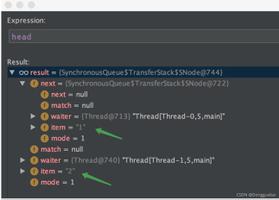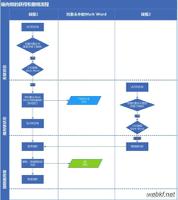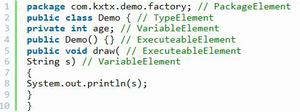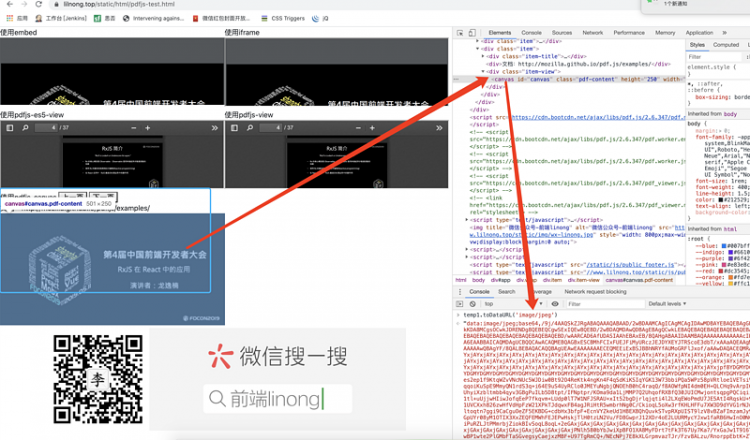python的base64结果和java不一样

直接上代码
py
data = { 'name' : 'Connor'
}
print(json.dumps(data))
print(b64encode(bytes(json.dumps(data))))
结果
{"name": "Connor"}eyJuYW1lIjogIkNvbm5vciJ9
java
BASE64Encoder encoder = new BASE64Encoder(); Map<String,String> ret = new HashMap<>();
ret.put("name","Connor");
String s = JSON.toJSONString(ret);
out.println(s);
try {
out.println(encoder.encode(s.getBytes("UTF-8")));
} catch( UnsupportedEncodingException e ) {
e.printStackTrace();
}
结果
{"name":"Connor"}eyJuYW1lIjoiQ29ubm9yIn0=
求高人指点。。。不胜感激!!!
回答:
{"name":"Connor"}{"name": "Connor"}
py的多了一个空格
回答:
楼上的好眼力
使用separators来去除空格问题
json.dumps(data, separators=(',', ':'))回答:
如果你看 一下java8以上的版本中的java.util.Base64.Encoder的源码,你会看到这里涉及两种不同的标准 RFC 2045/ RFC 4648
区别在于最后两个字符的选用、回行符选用、结尾是否配齐等选项。
很多实现不完全是按上面的标准来的,导致结果各异。
private Encoder(boolean isURL, byte[] newline, int linemax, boolean doPadding) { this.isURL = isURL;
this.newline = newline;
this.linemax = linemax;
this.doPadding = doPadding;
}
/**
* This array is a lookup table that translates 6-bit positive integer
* index values into their "Base64 Alphabet" equivalents as specified
* in "Table 1: The Base64 Alphabet" of RFC 2045 (and RFC 4648).
*/
private static final char[] toBase64 = {
'A', 'B', 'C', 'D', 'E', 'F', 'G', 'H', 'I', 'J', 'K', 'L', 'M',
'N', 'O', 'P', 'Q', 'R', 'S', 'T', 'U', 'V', 'W', 'X', 'Y', 'Z',
'a', 'b', 'c', 'd', 'e', 'f', 'g', 'h', 'i', 'j', 'k', 'l', 'm',
'n', 'o', 'p', 'q', 'r', 's', 't', 'u', 'v', 'w', 'x', 'y', 'z',
'0', '1', '2', '3', '4', '5', '6', '7', '8', '9', '+', '/'
};
/**
* It's the lookup table for "URL and Filename safe Base64" as specified
* in Table 2 of the RFC 4648, with the '+' and '/' changed to '-' and
* '_'. This table is used when BASE64_URL is specified.
*/
private static final char[] toBase64URL = {
'A', 'B', 'C', 'D', 'E', 'F', 'G', 'H', 'I', 'J', 'K', 'L', 'M',
'N', 'O', 'P', 'Q', 'R', 'S', 'T', 'U', 'V', 'W', 'X', 'Y', 'Z',
'a', 'b', 'c', 'd', 'e', 'f', 'g', 'h', 'i', 'j', 'k', 'l', 'm',
'n', 'o', 'p', 'q', 'r', 's', 't', 'u', 'v', 'w', 'x', 'y', 'z',
'0', '1', '2', '3', '4', '5', '6', '7', '8', '9', '-', '_'
};
private static final int MIMELINEMAX = 76;
private static final byte[] CRLF = new byte[] {'\r', '\n'};
static final Encoder RFC4648 = new Encoder(false, null, -1, true);
static final Encoder RFC4648_URLSAFE = new Encoder(true, null, -1, true);
static final Encoder RFC2045 = new Encoder(false, CRLF, MIMELINEMAX, true);
用是面的类,测试如下
import java.util.Base64;
public class Base64Test {
@Test
public void testBase64() {
String s ="{\"name\": \"Connor\"}";
final byte[] bf = s.getBytes();
System.out.println(s);
System.out.println(Base64.getEncoder().encodeToString(bf));
System.out.println(Base64.getUrlEncoder().encodeToString(bf));
System.out.println(Base64.getMimeEncoder().encodeToString(bf));
}
}
会输出:
{"name": "Connor"}eyJuYW1lIjogIkNvbm5vciJ9
eyJuYW1lIjogIkNvbm5vciJ9
eyJuYW1lIjogIkNvbm5vciJ9
回答:
楼主解决了吗?为何我python输出还是
{"name":"Connor"}
b'eyJuYW1lIjogIkNvbm5vciJ9'
没看到空格不说,多了个b,你怎么没有b啊?python和java的输出还是不一样
以上是 python的base64结果和java不一样 的全部内容, 来源链接: utcz.com/a/159656.html









